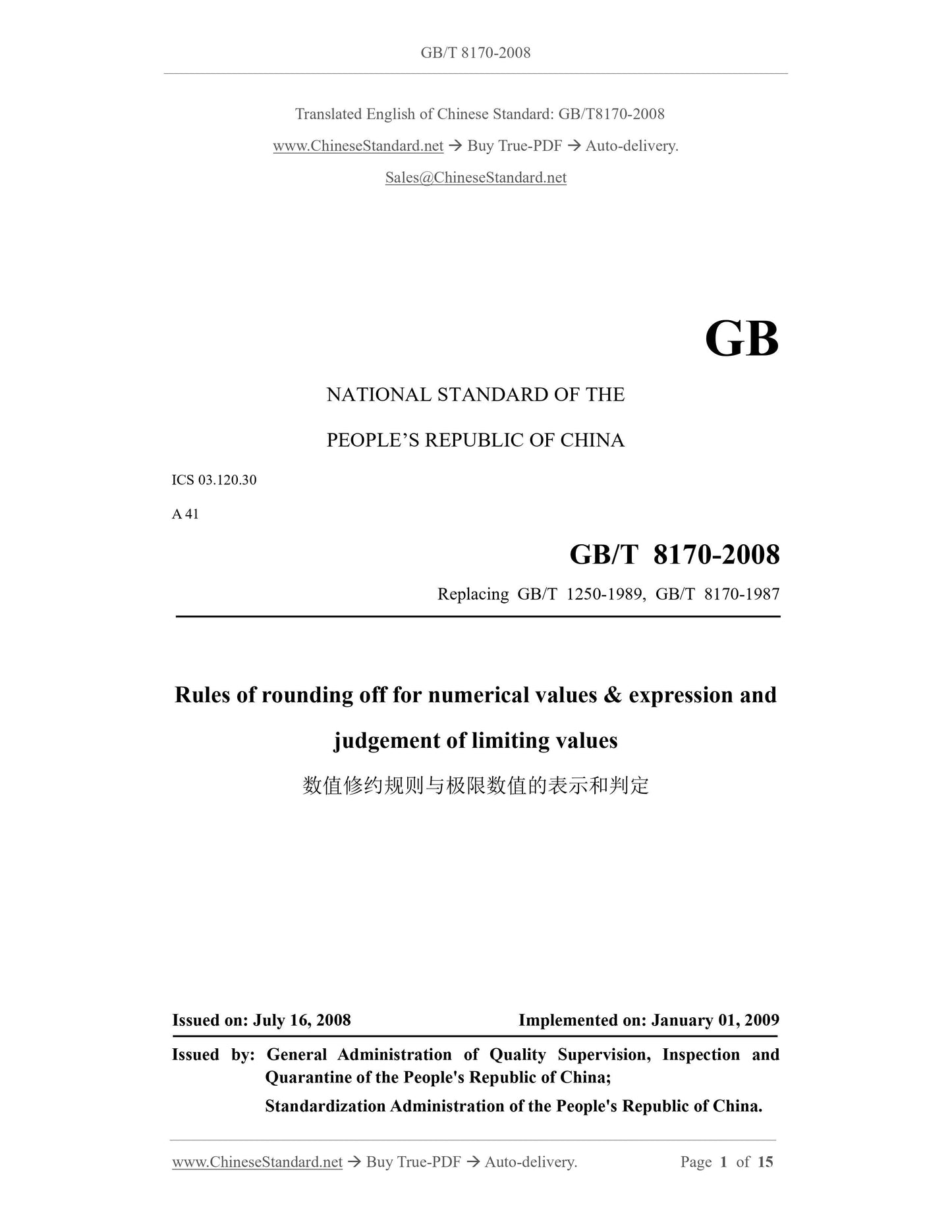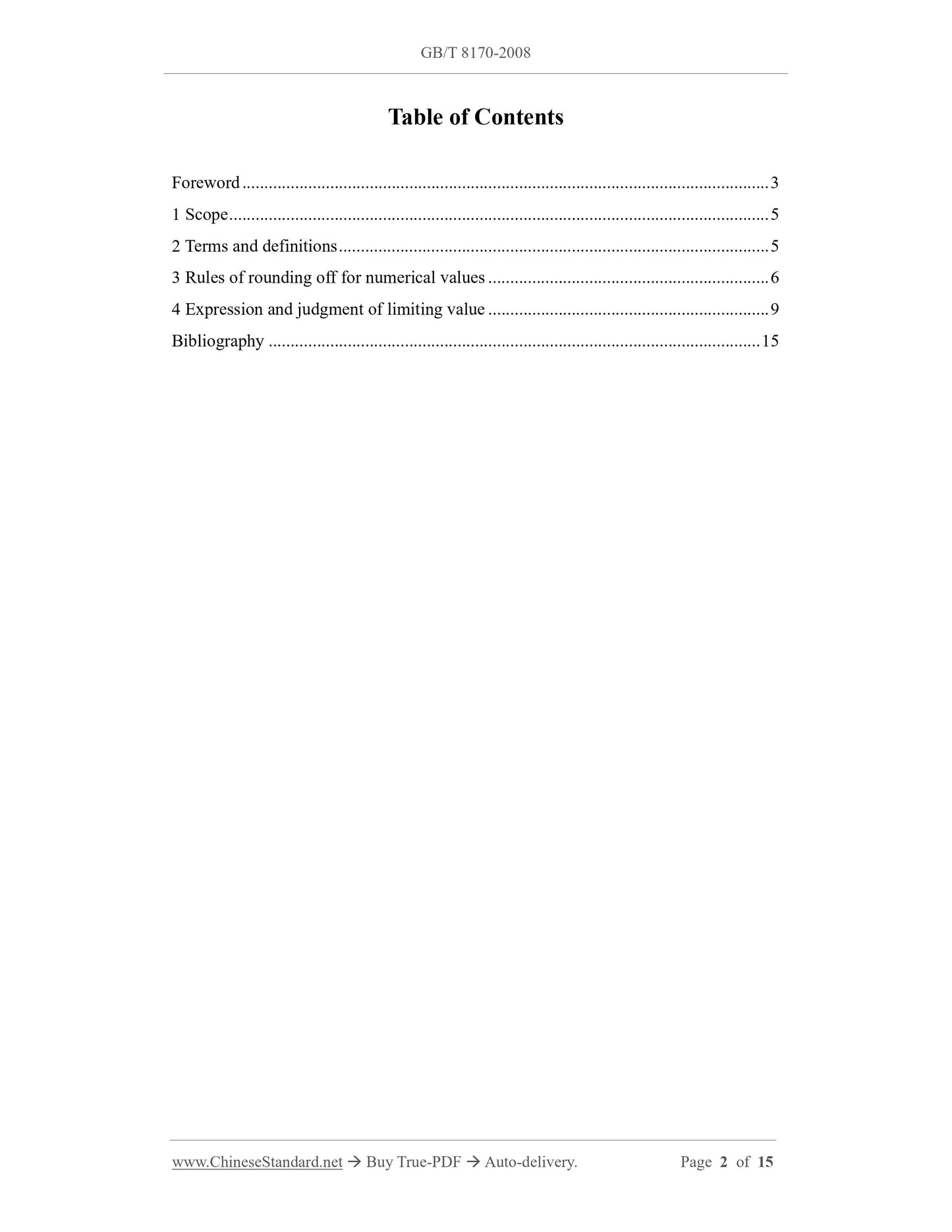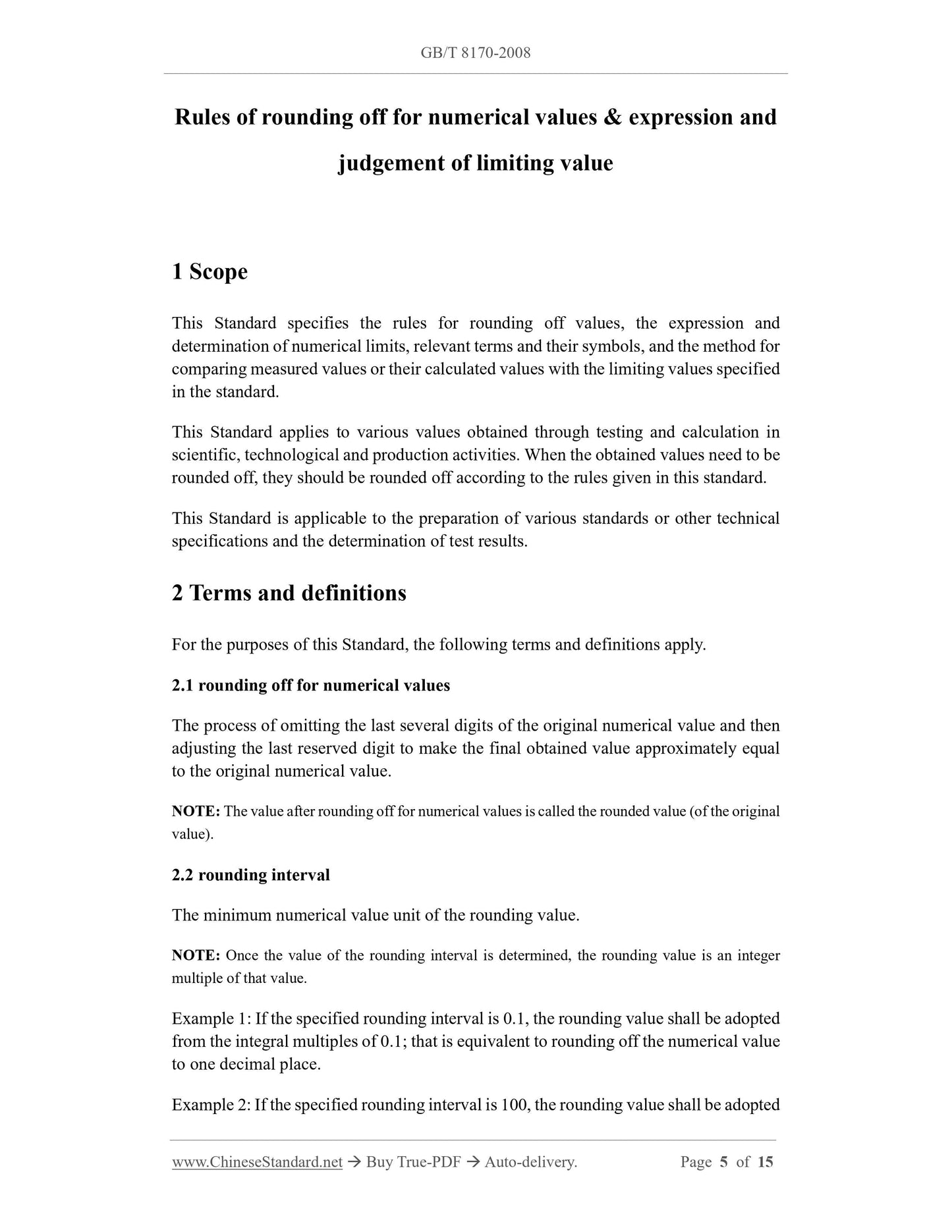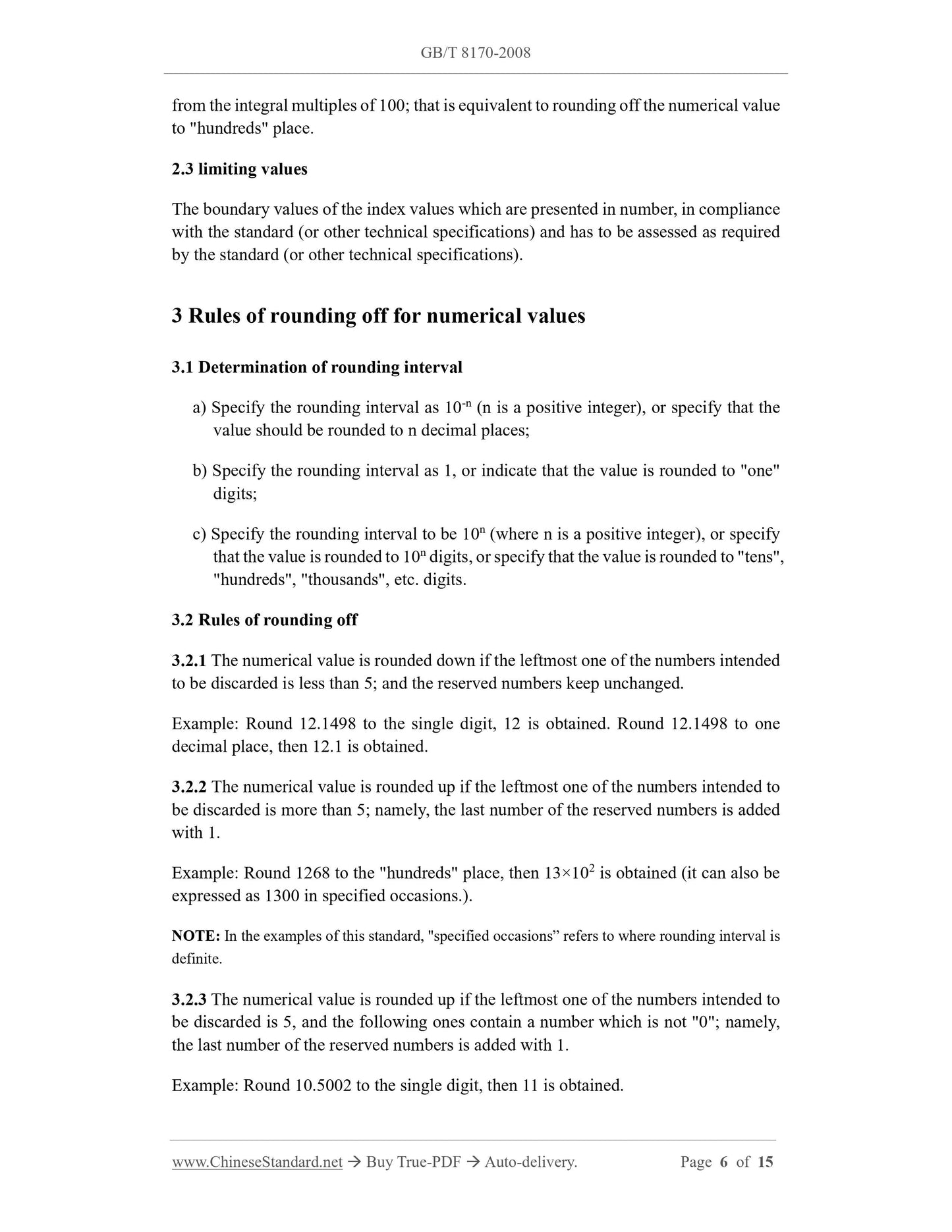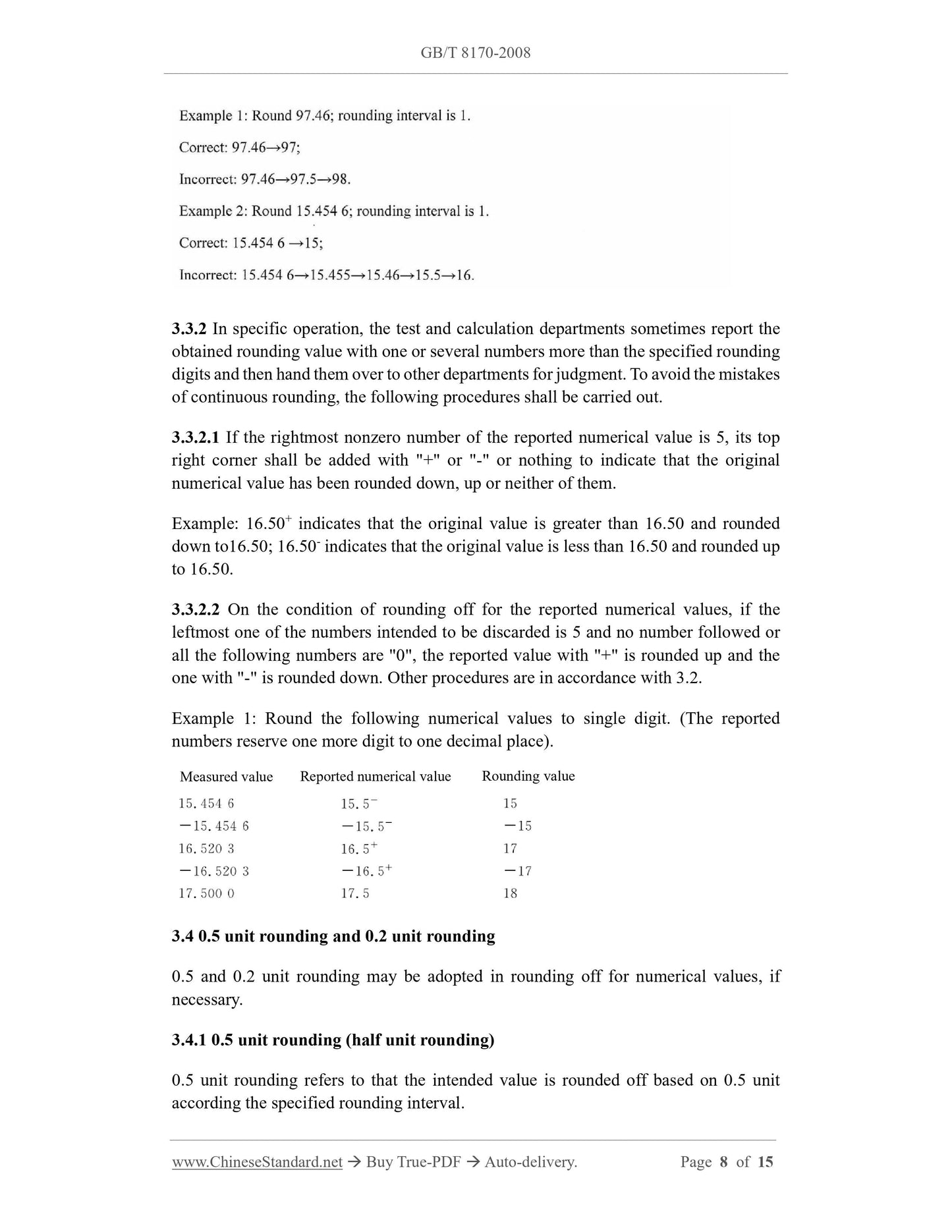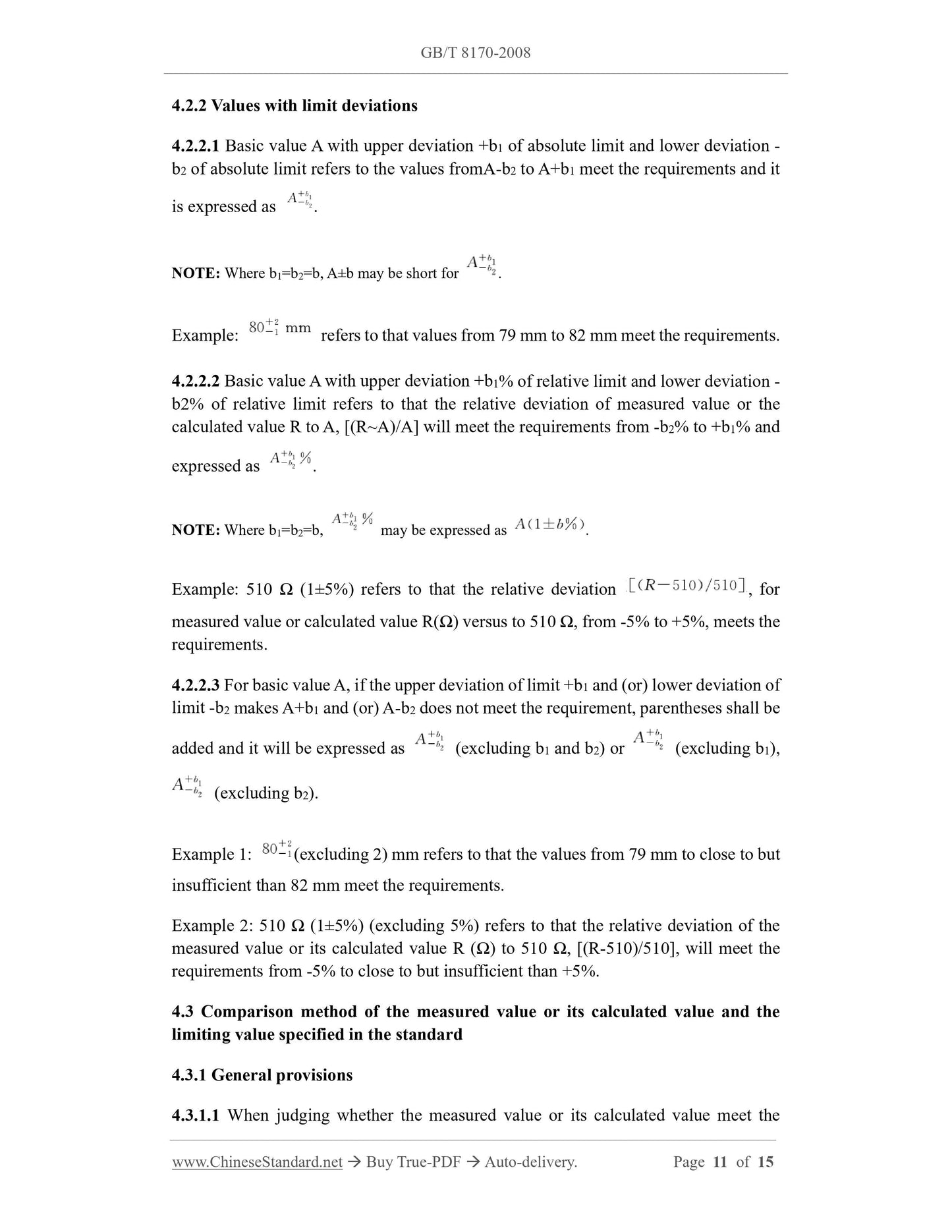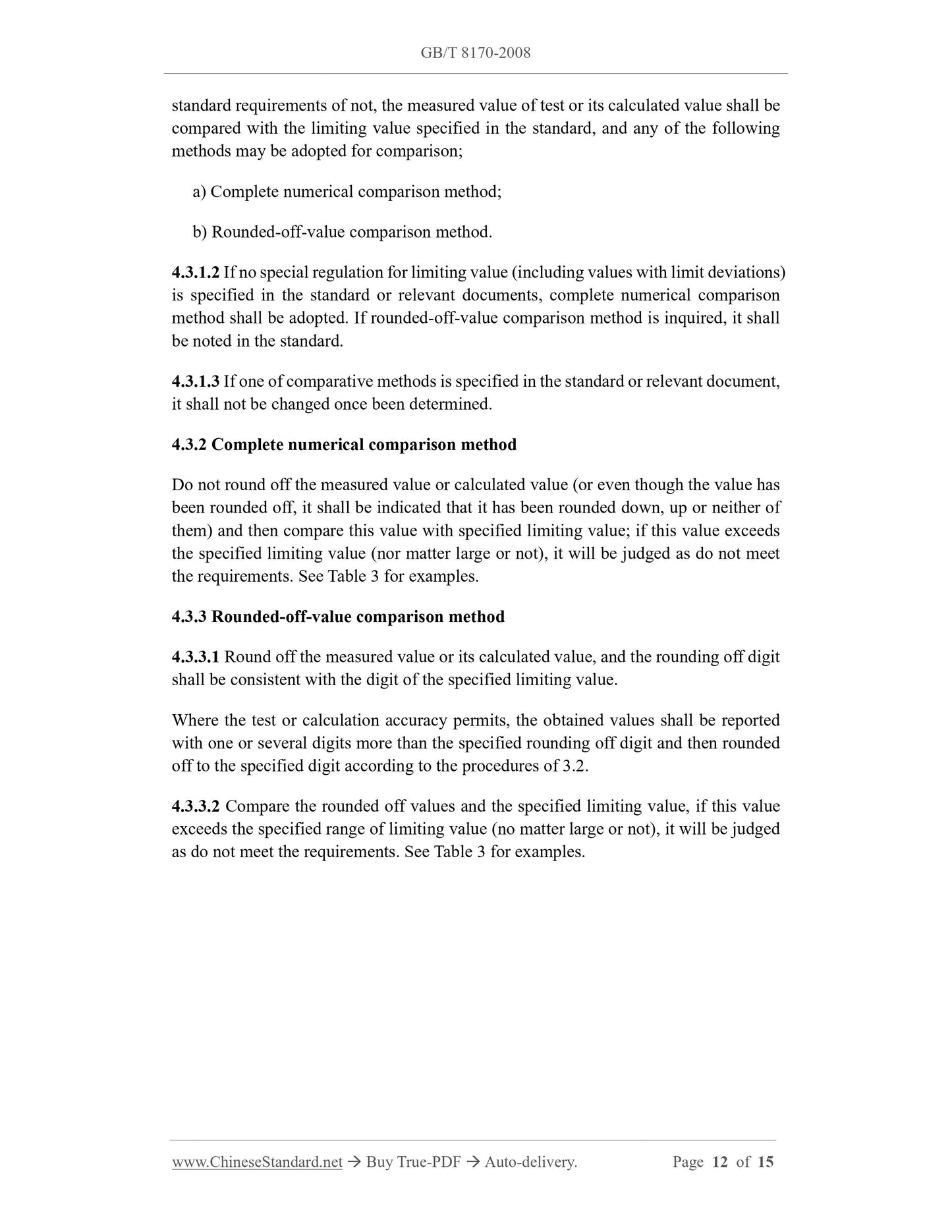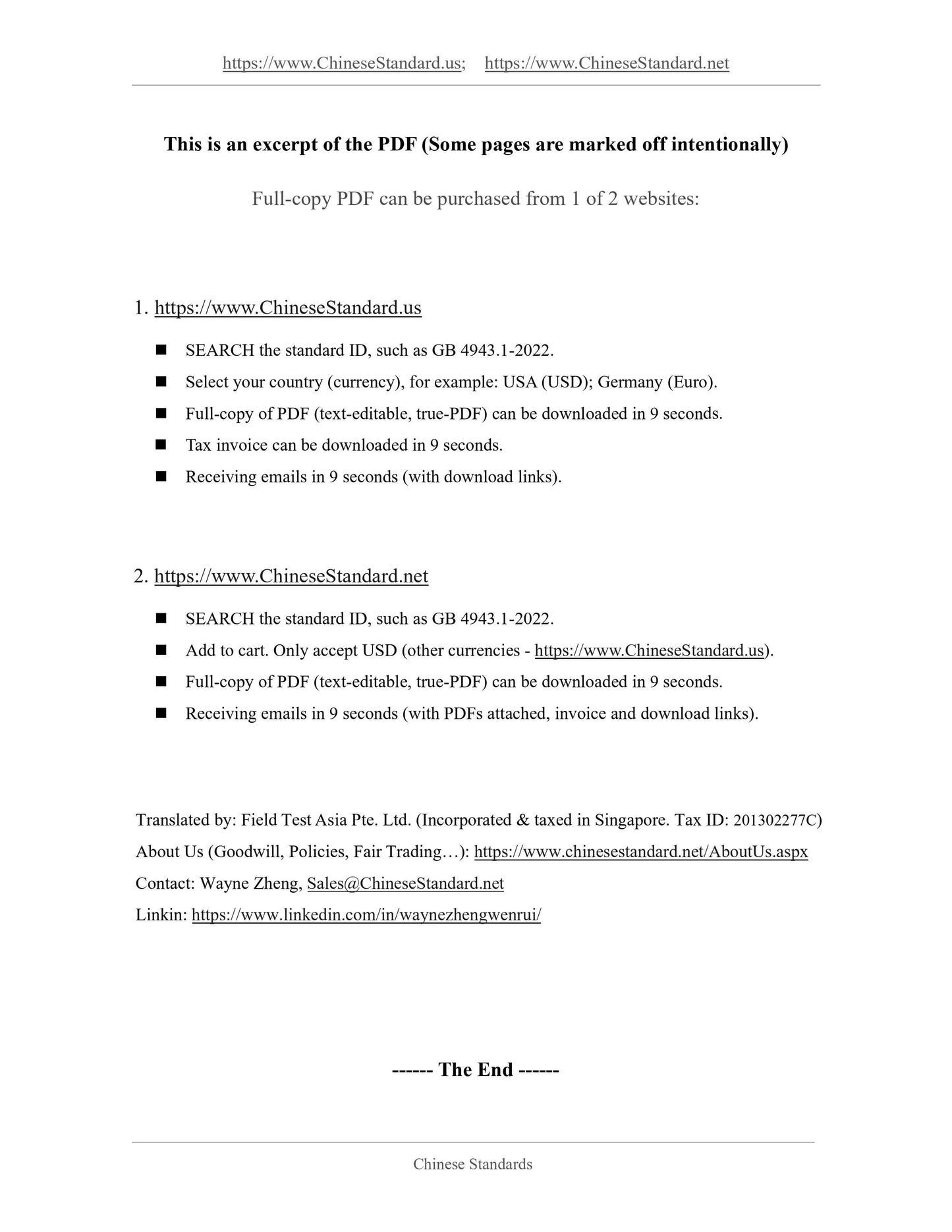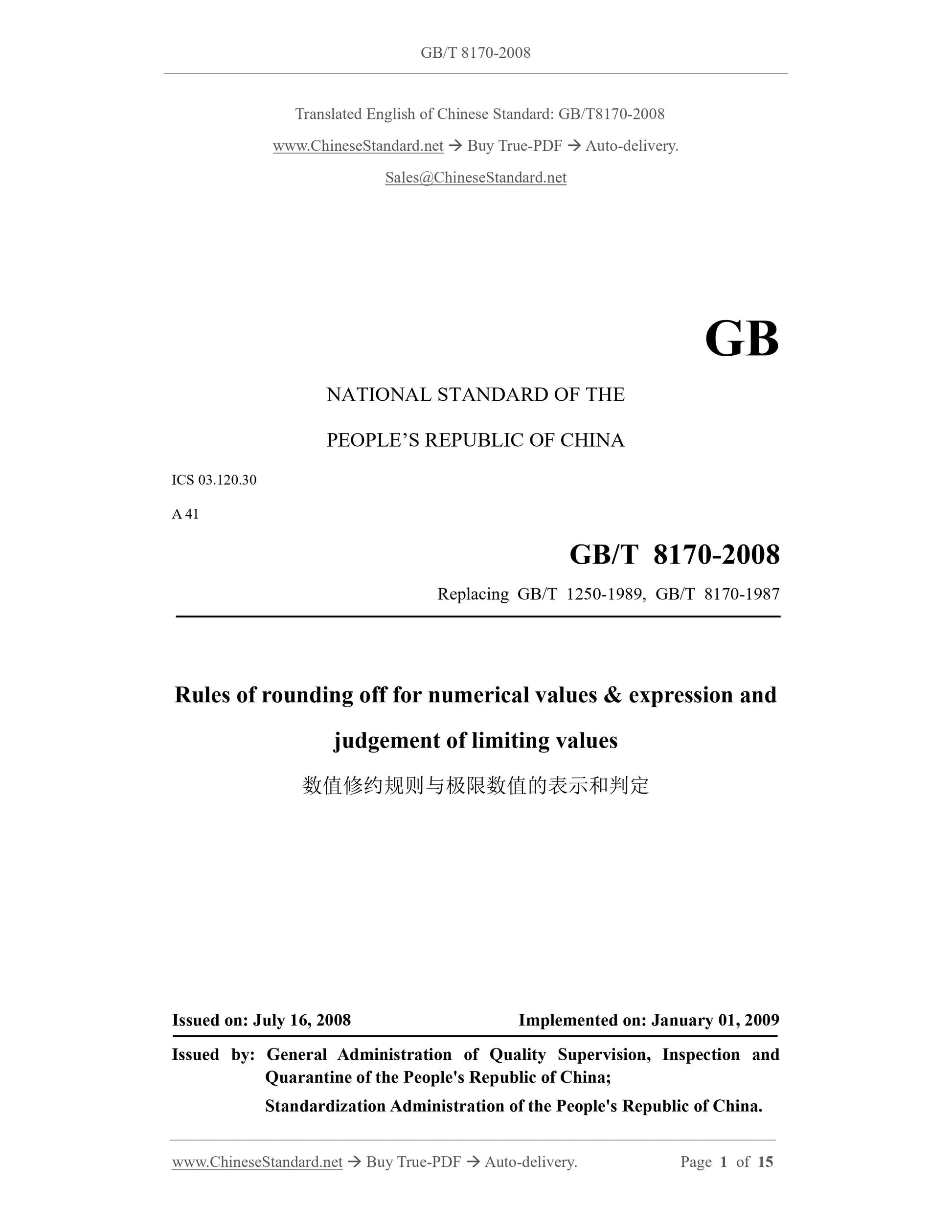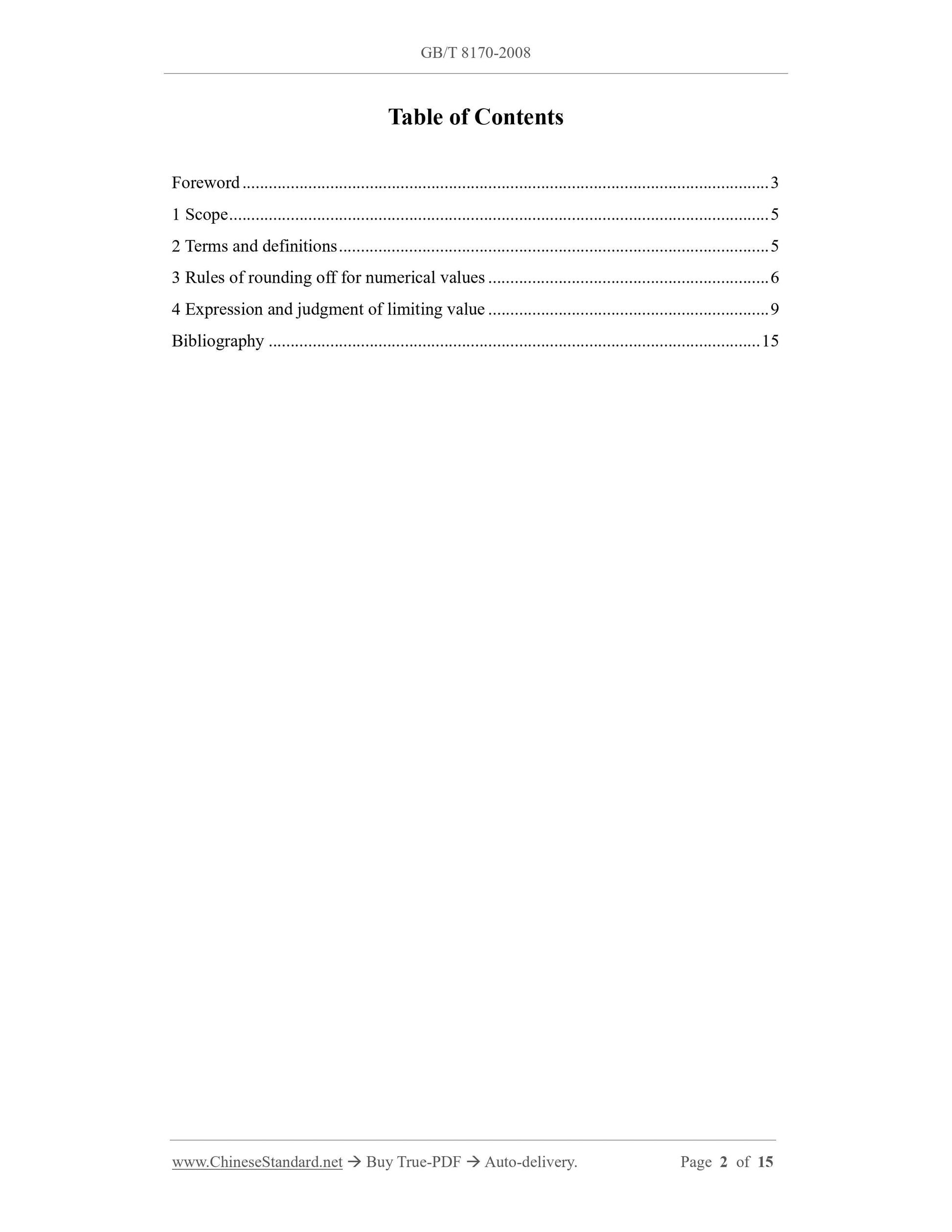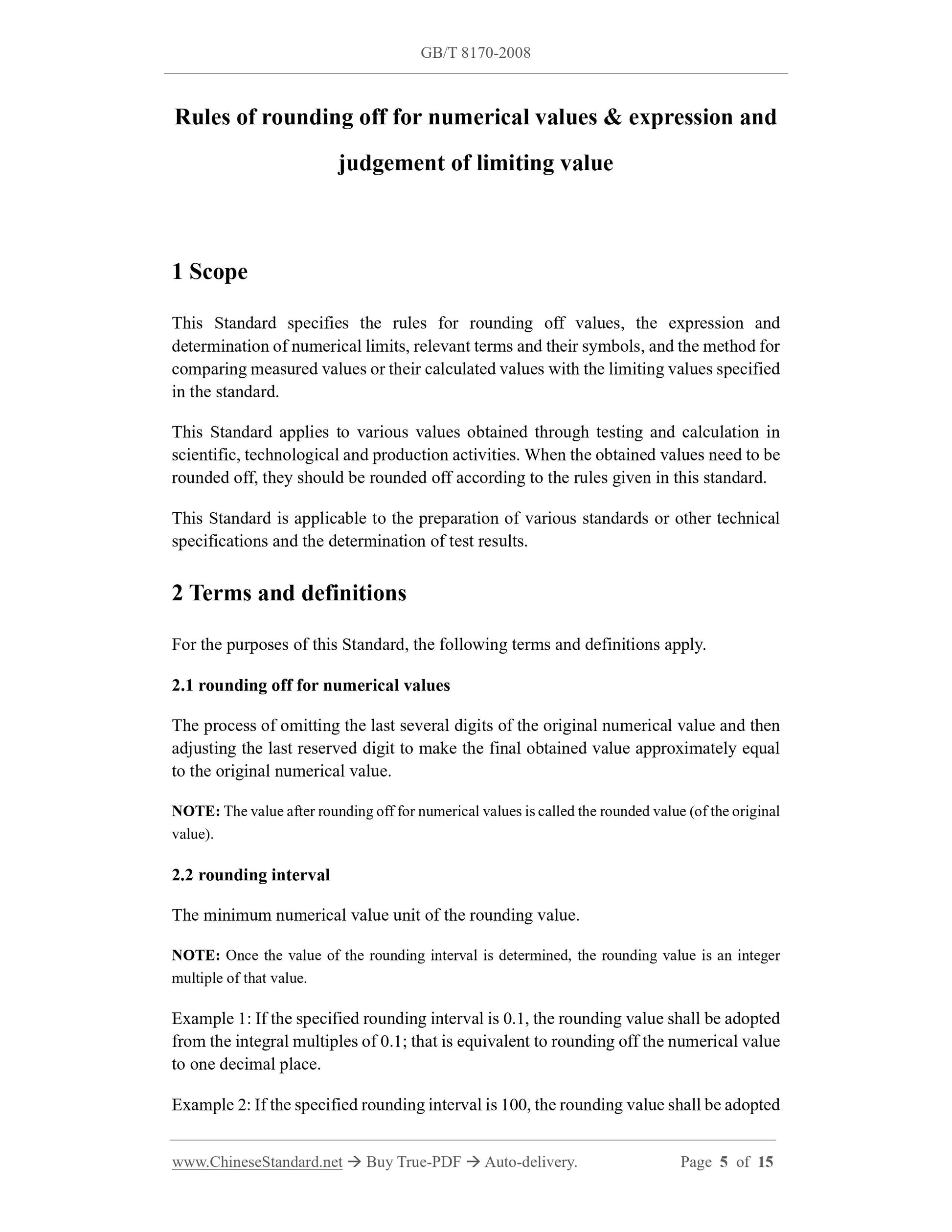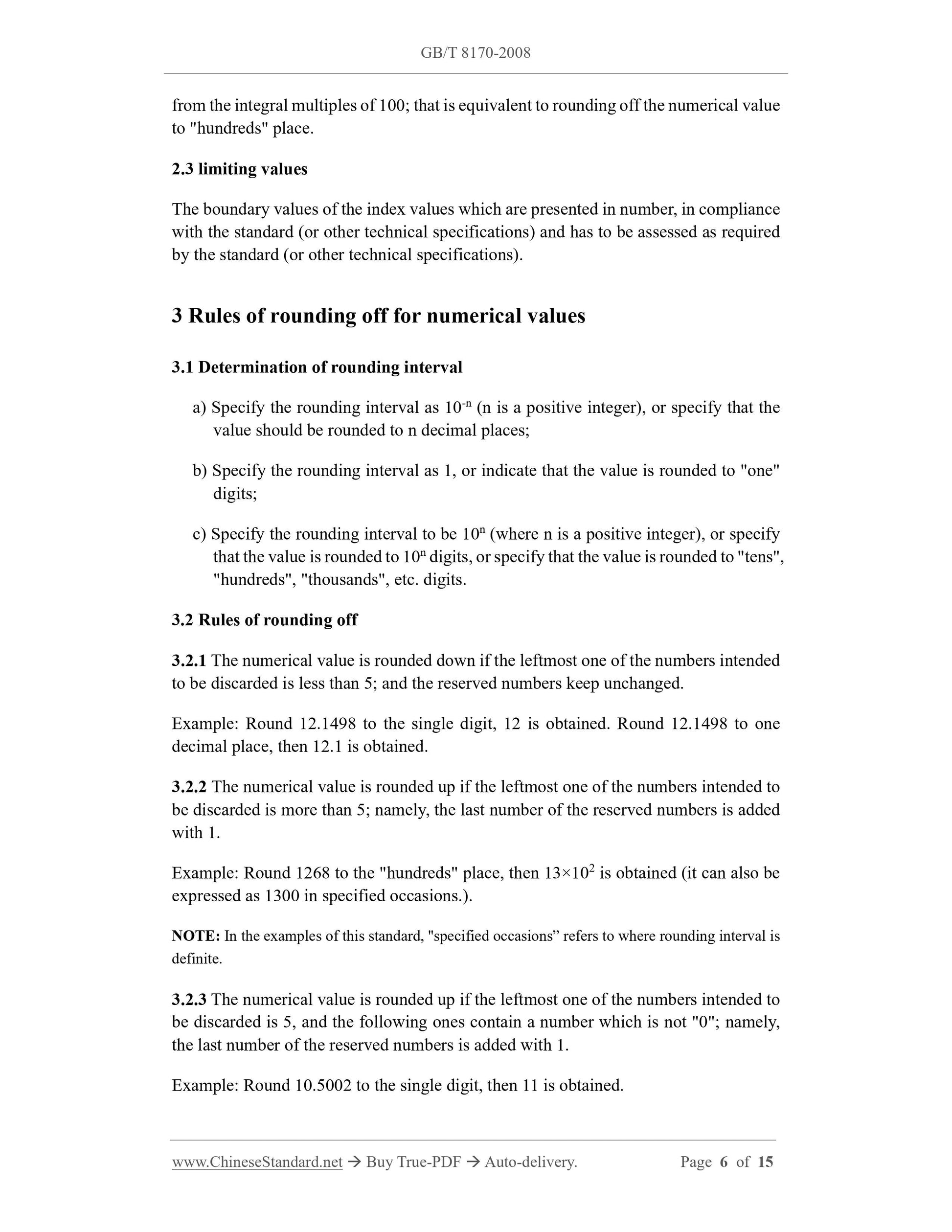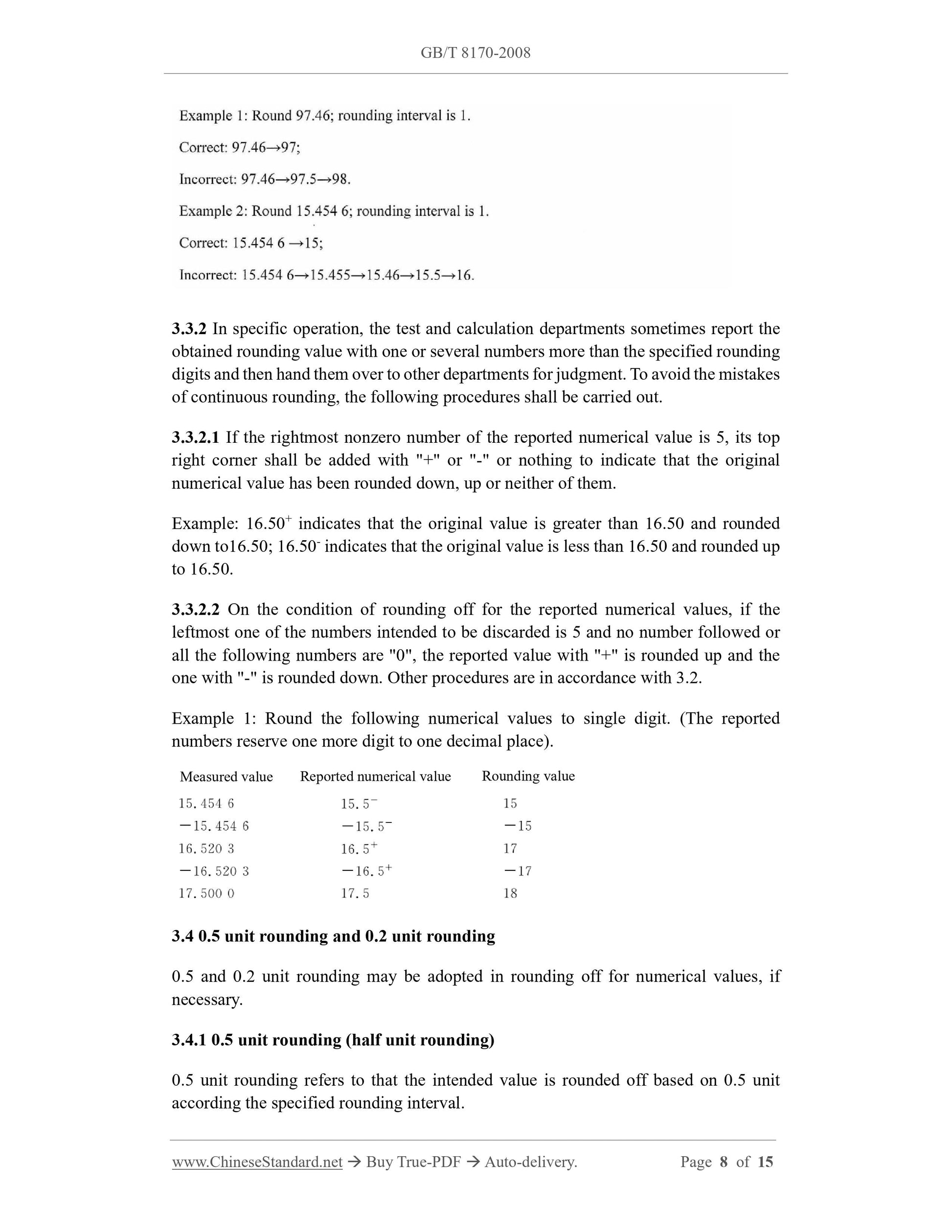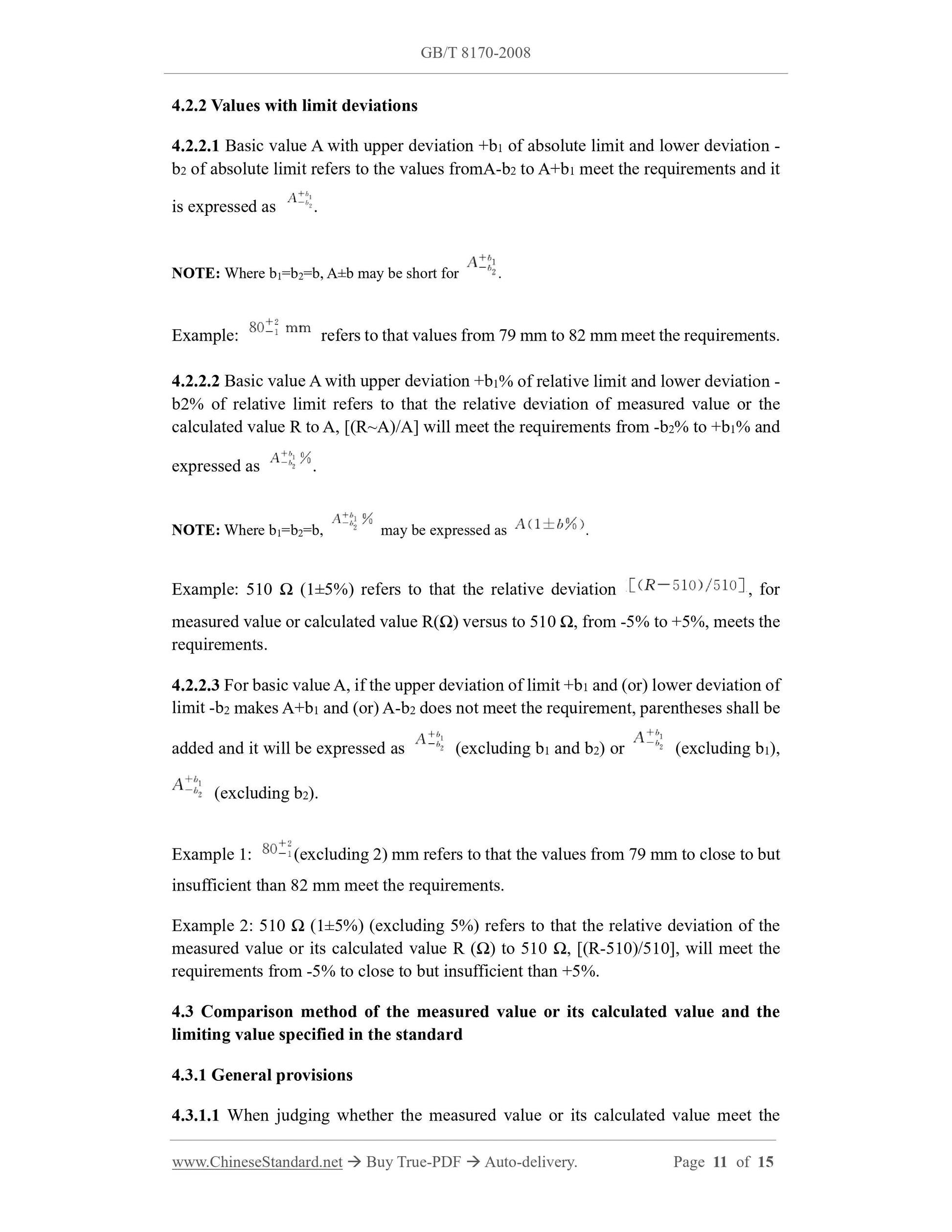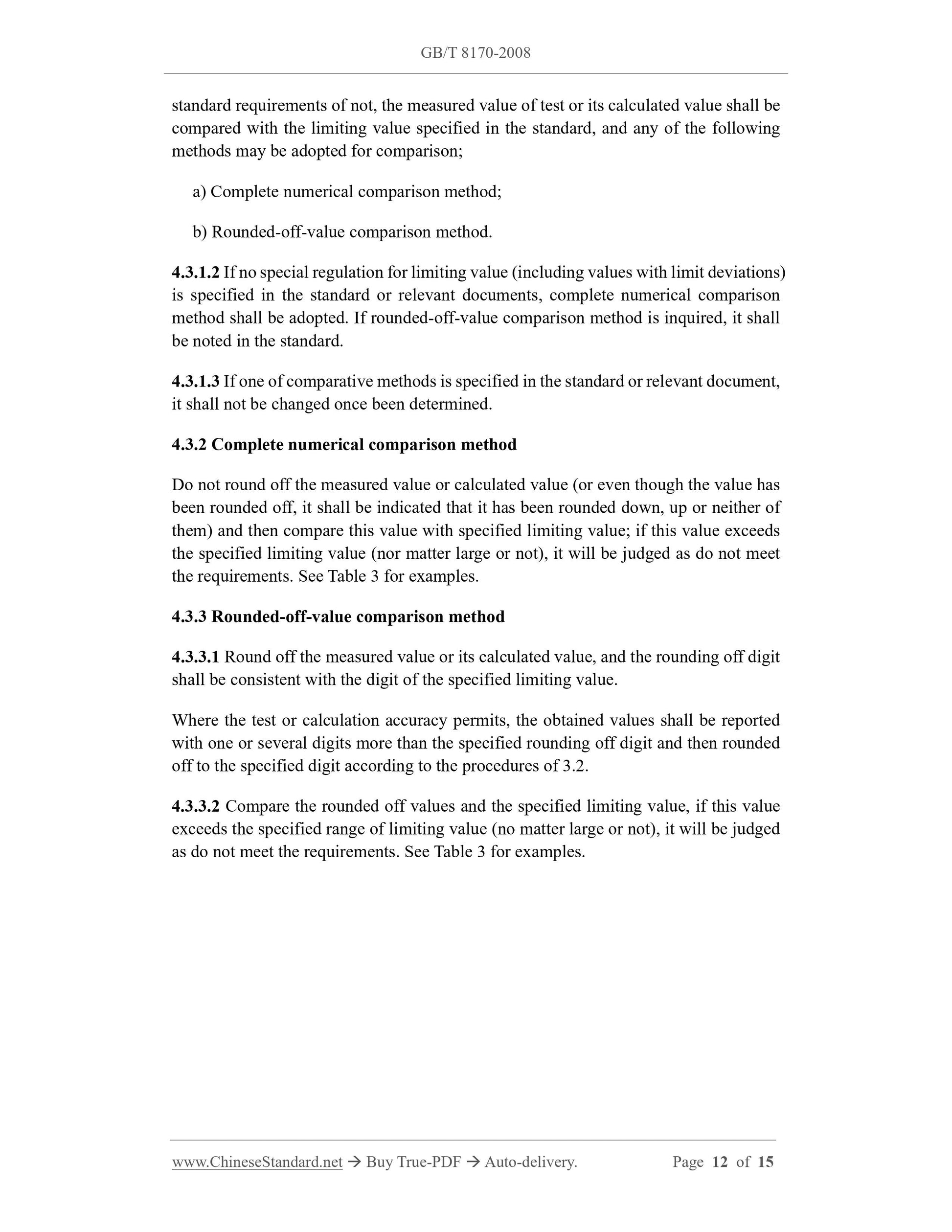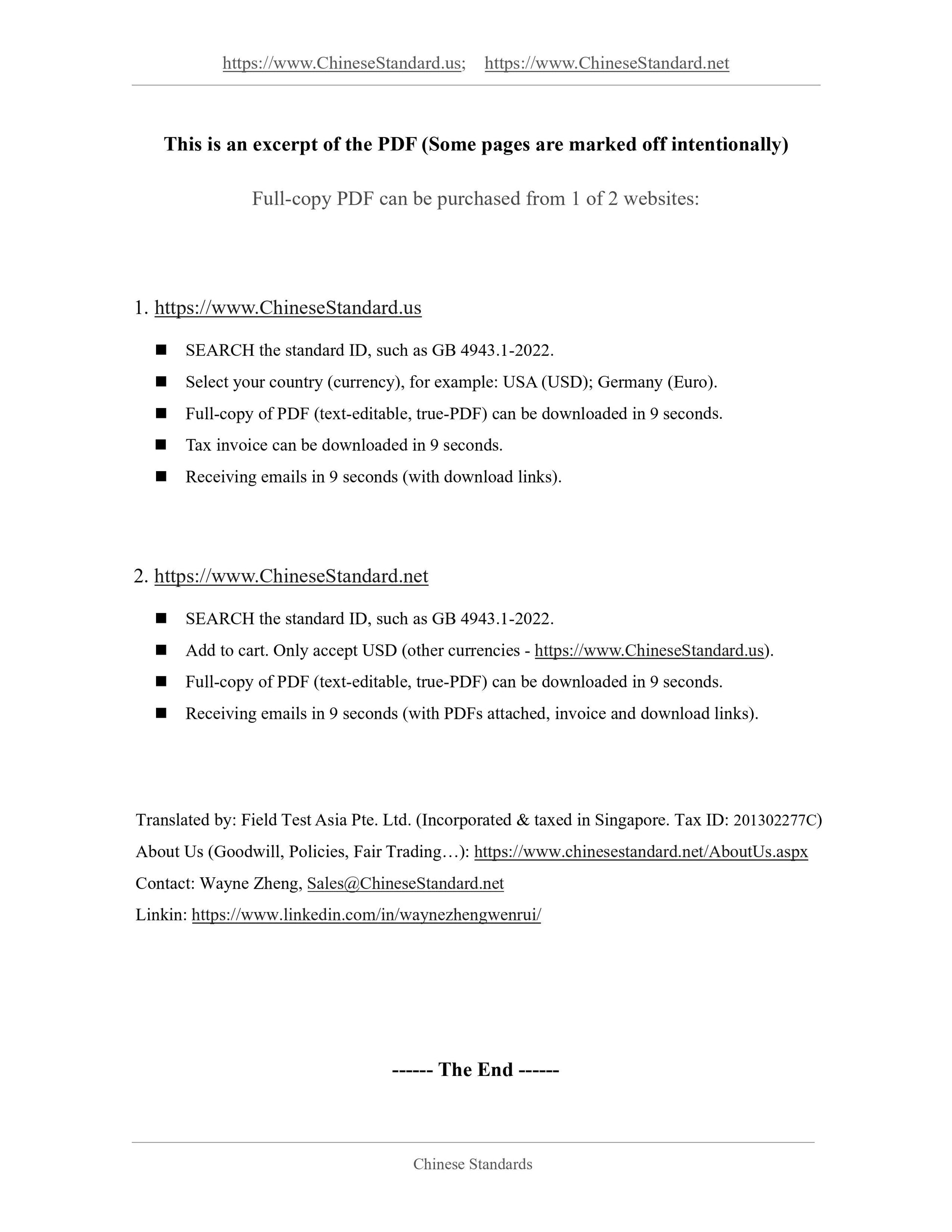1
/
of
8
www.ChineseStandard.us -- Field Test Asia Pte. Ltd.
GB/T 8170-2008 English PDF (GB/T8170-2008)
GB/T 8170-2008 English PDF (GB/T8170-2008)
Regular price
$75.00
Regular price
Sale price
$75.00
Unit price
/
per
Shipping calculated at checkout.
Couldn't load pickup availability
GB/T 8170-2008: Rules of rounding off for numerical values and expression and judgement of limiting values
Delivery: 9 seconds. Download (and Email) true-PDF + Invoice.Get Quotation: Click GB/T 8170-2008 (Self-service in 1-minute)
Newer / historical versions: GB/T 8170-2008
Preview True-PDF
Scope
This Standard specifies the rules for rounding off values, the expression anddetermination of numerical limits, relevant terms and their symbols, and the method for
comparing measured values or their calculated values with the limiting values specified
in the standard.
This Standard applies to various values obtained through testing and calculation in
scientific, technological and production activities. When the obtained values need to be
rounded off, they should be rounded off according to the rules given in this standard.
This Standard is applicable to the preparation of various standards or other technical
specifications and the determination of test results.
Basic Data
| Standard ID | GB/T 8170-2008 (GB/T8170-2008) |
| Description (Translated English) | Rules of rounding off for numerical values and expression and judgement of limiting values |
| Sector / Industry | National Standard (Recommended) |
| Classification of Chinese Standard | A41 |
| Classification of International Standard | 03.120.30 |
| Word Count Estimation | 10,169 |
| Date of Issue | 2008-07-16 |
| Date of Implementation | 2009-01-01 |
| Older Standard (superseded by this standard) | GB/T 8170-1987; GB/T 1250-1989 |
| Regulation (derived from) | Announcement of Newly Approved National Standards No. 12 of 2008 (No. 125 overall) |
| Issuing agency(ies) | General Administration of Quality Supervision, Inspection and Quarantine of the People's Republic of China, Standardization Administration of the People's Republic of China |
| Summary | This standard specifies the right value for rounding rules, values ??and limit values ??expressed determination method, the terminology and symbols, as well as the measured values ??or calculated values ??and standards prescribed limit values ??for comparison method, This standard applies to science and technology and production activities of the various tests and calculated values ??, the values ??obtained when rounding needed, they should be given the standard rules, this standard is applicable to a variety of standards or other technical specifications for the preparation and testing the results of determination. |
Share
